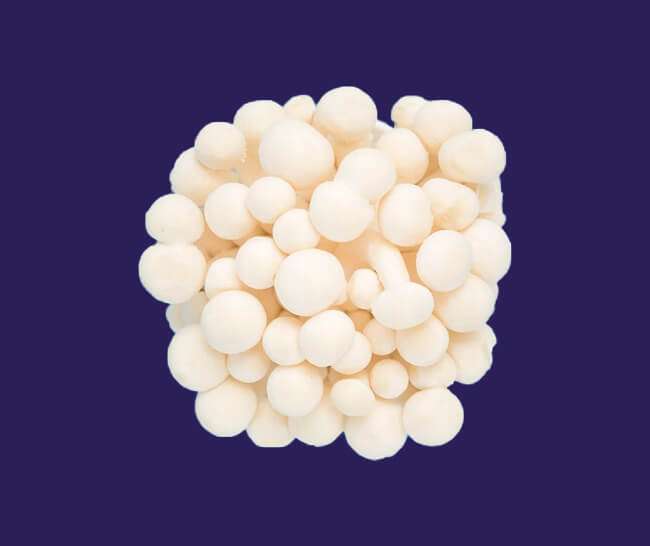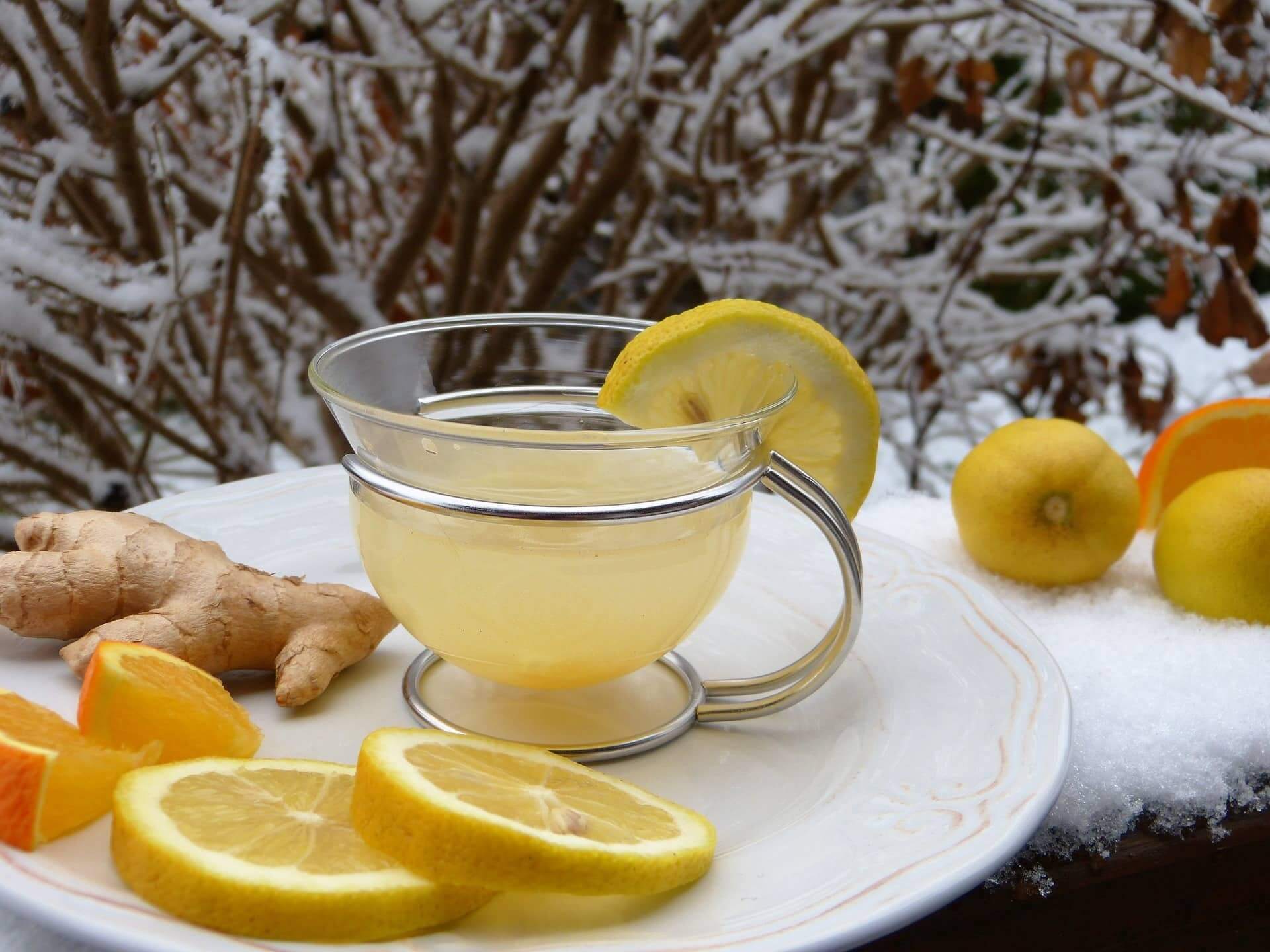Shiitake mushrooms are a popular mushroom variety native to East Asia and commonly found in a variety of dishes. Their strong umami flavor adds a meaty and savory flavor to soups, stews, and stir-fries. Flavor aside, these little mushroom caps are packed with nutrition. They have a number of reported health benefits including supporting the immune system, reducing the risk of certain types of cancer, and reducing the risk of heart disease.
In this article, we will dive into the health benefits of shiitake mushrooms, how they compare to other types of mushrooms, and some tips on how to enjoy them.
What Are Shiitake Mushrooms?
Shiitake mushrooms are small, ivory-colored mushrooms that are shaped like an umbrella and have curved stems. They originated in Eastern Asia and have been used in medicinal preparations for centuries.1
Shiitake means “mushroom of the shii” where “shii” refers to an oak tree in Japanese. In the wild, they grow on dead oak trees or other hardwood. The majority of shiitake mushrooms are still grown in Japan but are also cultivated in other parts of the worldWhen grown for commercial purposes, they are grown in sawdust blocks on a large scale.2
Shiitake extracts, powders, and pills are also available. There is some research on the active component of the shiitake mushroom, lentinan, that is in many of these supplements. Western medicine has used lentinan to help boost the immune syste, and treat HIV and cancer, but there is little research available on the effectiveness or potency of over-the-counter shiitake supplements.3
{{mid-cta}}
Shiitake Mushrooms Nutritional Facts
Mushrooms are classified as vegetables, though technically a fungi. They are a rich source of fiber, copper, selenium, and zinc. Varieties grown in the sunlight or under ultraviolet light are also a good source of Vitamin D.
You can find shiitake mushrooms both in fresh and dried form in most U.S. grocery stores. While some may frown on dried mushrooms, they still have just as many nutrients as fresh and may carry an even deeper flavori. Fresh shiitake mushrooms have While the fresh a buttery taste and tender texture, while the dried ones have a smoky aroma and chewy mouthfeel.
A single serving of shiitake mushrooms (about 4 raw) contains:4
- 40 calories
- 0 g fat
- 10 g carbohydrates
- 1.5 g fiber (most from beta-glucan)
- 18 mcg of selenium (30% DV)
- 84 mg potassium
- 0.504 mcg of Vitamin D 2.5%DV (higher if grown under U-V light)
A cup of cooked shiitake mushrooms contains more than the daily requirements for copper, a mineral essential for supporting the immune system. They also contain some protein and many of the same amino acids found in meat, including the amino acid ergothioneine, which is a potent antioxidant.1
Bonus: Mushrooms are low in the glycemic index, ranging from 10-15, making them an excellent choice for people who are trying to manage their blood sugar.5
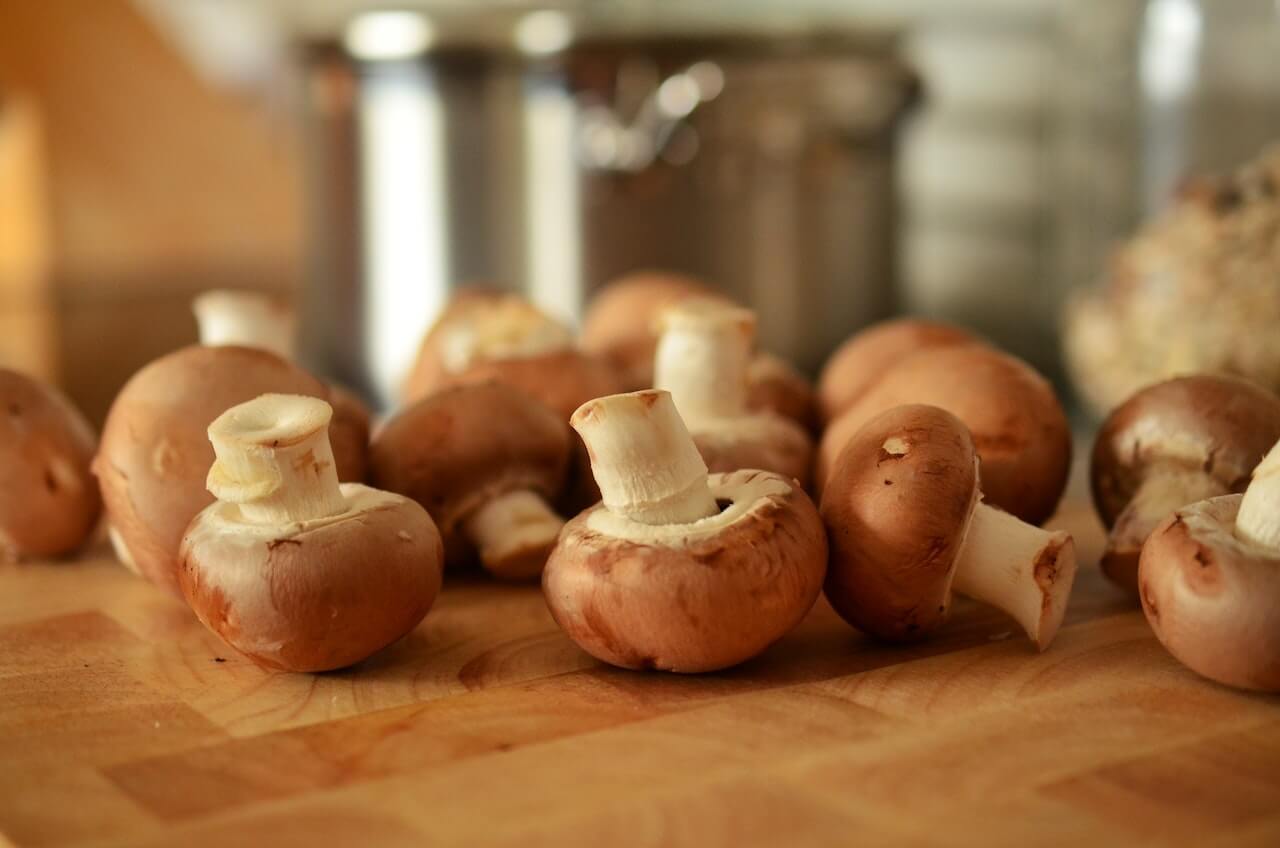
8 Health Benefits of Shiitake Mushrooms
1. Support the immune system
Shiitake mushrooms contain a number of components that help support the immune system. They are a good source of the antioxidant ergothioneine, which helps reduce oxidative stress. Fiber found in these mushrooms, speifically B-glucans, have been investigated for its anti-tumor activity.1 They also are one of the richest sources of copper, a mineral that is essential for supporting the immune system.6
2. Promotes heart health
Shiitake mushrooms are low in fat and contain no saturated fat or cholesterol. Their fiber content, most of which is beta-glucan, helps reduce cholesterol levels and enzyme eritadenine that interferes with cholesterol production.7 They also contain sterols, a compound that helps block cholesterol absorption in your gut. Sterols also help your body remove some cholesterols as waste.21
They are also rich in ergothioneine, an amino acid and antioxidant, that has been associated with a reduced risk of coronary heart disease.8 A large prospective study in Sweden found those with higher ergothioneine levels, had lower rates of cardiovascular disease.8
3. Helps maintain a healthy weight
With only 40 calories per serving and over 2 grams of fiber, shiitake mushrooms can be helpful when you are trying to lose or maintain weight.
The fiber in shiitake mushrooms is the same fiber found in oatmeal, barley, and rye. Eating foods rich in b-glucan is satiating and helps keep you feeling full longer, which helps with maintaining a healthy weight and keeping blood sugars stable.
4. Antimicrobial properties
Shiitake mushrooms have active compounds including erythritol, a type of sugar alcohol, which may have anti-microbial and anti-bacterial effects.
There is some evidence that a shiitake mushroom extract may help reduce gingivitis and plaque build-up in adults by preventing bacteria from adhering to teeth.9 In one small clinical trial, a shiitake mushroom extract mouth rinse used for 2 weeks had significantly reduced plaque buildup compared to the placebo group.10
5. May reduce the risk of certain cancers
The beta-glucans and proteins found in mushrooms are active substances that help support the immune system and may have anti-cancer activity. These nutrients work by stimulating cells in the body that destroy cancer cells.11
A recent large meta-analysis and systematic review of observational studies found that higher mushroom intake was associated with a lower risk of all cancer and specifically a lower risk of breast cancer.12
6. Supports brain health
Because of their high concentration of antioxidants and vitamin D, mushrooms have been associated with brain health. A recent review of the NHANES (National Health and Nutrition Examination Survey, 2011-2014) looked at more then 2800 people over the age of 60. Those with a higher mushroom intake had better cognitive performance including word recall, attention span, and faster processing speed.13
Other research has suggested that ergothioneine may also be responsible for slowing cognitive decline. A study of 470 elderly people found that those who had lower plasma ergothioneine levels experienced poorer cognitive performance.14
More research is needed to understand the effects but including mushrooms as a regular part of your diet may be another component to help reduce or delay cognitive aging.14
7. Promote gut health
Once again, b-glucan in the mushroom comes into play here. This fiber is classified as a prebiotic, which helps feed healthy bacteria in your GI tract. These bacteria are essential for maintaining and supporting our immune system, assisting with digestion, and potentially reducing the risk of heart disease, cancer, and diabetes.15
8. May support bone health
Mushrooms that are grown under ultraviolet light are a good source of vitamin D.16 Vitamin D is essential for bone health and has been documented to be a nutrient of concern for most adult Americans.
Mushrooms grown under ultraviolet light are one of the few natural food sources of Vitamin D and the only non-animal source.17
Shiitake Mushrooms vs. Other Mushrooms
Shiitake mushrooms are the second most consumed mushroom in the world behind the common white button mushroom. Different varieties of mushrooms have different flavors and slightly different nutritional profiles. Here’s a quick rundown of some of the most common mushroom varieties, ways to use them, and their nutritional benefits:18
Shiitake mushrooms. These are common in Asian cuisine and are light in color but rich in flavor. They are a good source of riboflavin and when cooked, an excellent source of copper, selenium, and pantothenic acid.
White button mushrooms. These are the most commonly consumed mushrooms in the United States. They are mild in flavor and can be enjoyed raw, sauteed, or roasted. They are rich in B vitamins and copper.
Crimini mushrooms (Baby Bellas). These fan favorites are becoming more popular and have a meaty texture and flavor. They are delicious sauteed and can be added to beef and vegetable dishes. Crimini mushrooms are high in copper, selenium, and B vitamins.
Portabella mushrooms. These big mushrooms are often the star of vegetarian based dishes and are related to crimini mushrooms. They are delicious grilled or broiled. Like other types of mushrooms, they are rich in copper, selenium, and the B vitamin niacin.
Oyster mushrooms. These are small, delicate mushrooms that are often used in Asian dishes. They cook very quickly so are perfect for stir-fries. These mushrooms are high in the B vitamins riboflavin, niacin, and pantothenic acid.
Potential Side Effects of Shiitake Mushrooms Consumption
While rare, some people have experienced an allergic skin reaction after eating raw shiitake mushrooms. The compound that provides health benefits, lentinan, can also cause an allergic reaction. Irritation and itchiness are the most common complaints and can last for a few days and up to two weeks. Cooking the mushrooms reduces the activity of the compound and helps people avoid the reaction.19,20
The only other issue some people experience is digestive issues. Because they are high in fiber, consuming large quantities may cause bloating and discomfort.
How to Eat Shiitake Mushrooms
Shiitake mushrooms have a deep, rich, earthy flavor that compliments dishes from vegetarian to meat filled. They are most often used in Asian dishes but are also delicious in soups, pasta, or roasted on pizza.
You can find shiitake mushrooms at most grocery stores and in many Asian markets. They are typically sold loose (instead of pre-packed). When buying shiitake mushrooms, look for ones that are plump with firm gills.
To clean your mushrooms, brush them lightly with a mushroom brush or wipe them with a damp paper towel to remove any dirt. If the stems are tough or woody, cut them off and save them to use to make stock o
Here are a few delicious ways you can add shiitake mushrooms to your diet.
- Saute them with onions and garlic and add to scrambled eggs or omelets.
- Stir them into soups or stews.
- Roast them and add them on top of a pizza with arugula and a smokey mozzarella cheese.
- Add sauteed shiitake mushrooms to a pasta sauce.
- Add roasted shiitake mushrooms to a grain bowl.
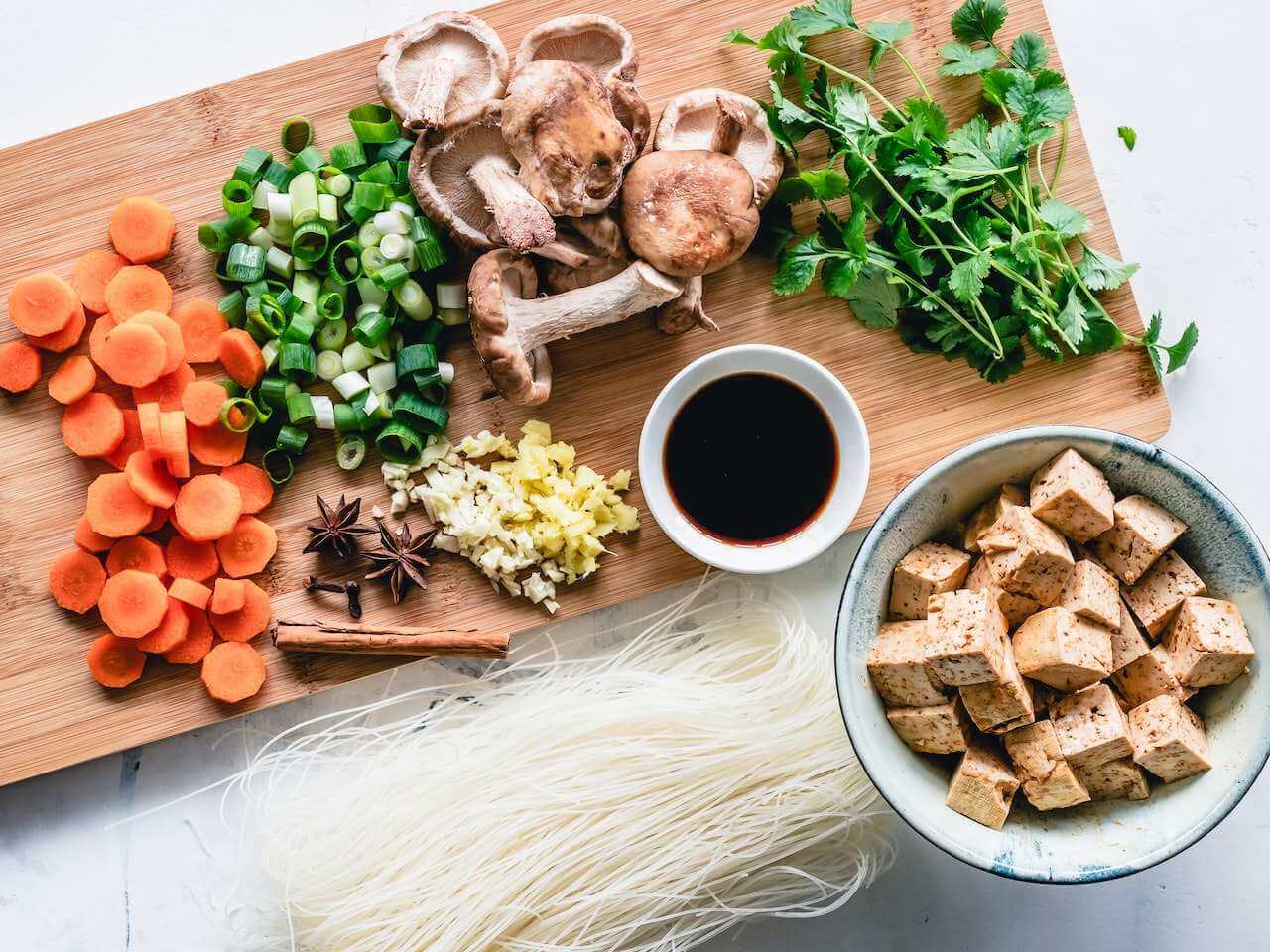
Final Tips
Shiitake mushrooms are a great way to add a boost of umami flavor to many dishes. Fresh shiitake mushrooms are best used within a week. Avoid wrapping them in plastic and store them in a porous paper bag in the refrigerator instead.
They should stay fresh in the fridge for about a week. If you get a strong odor and the mushrooms are slimy, they are spoiled and shouldn’t be used.
Dried mushrooms will last forever as long as they are stored in an air-tight container in a cool, dark place. To use them, soak them in warm water for 20-30 minutes.
Learn More About Healthy Nutrition with Signos’ Expert Advice.
Incorporating a variety of foods in your diet is the best way to make sure you are getting all the nutrition your body needs. You can learn more about different foods and how to incorporate healthy eating habits into your life with Signos’s expert advice.
Everyone is different and has different nutritional needs. Learning what works for you and then making small, sustainable changes can help improve your overall health. Head over to the Signos blog to learn more about food and nutrition and how Signos can help improve your health. Find out if Signos is a good fit for you by taking a quick quiz.
- Item 1
- Item 2
- item 3
Topics discussed in this article:
References
- Finimundy, T.C., Dillon, A.J.P., Henriques, J.A.P., Ely, M.R. (2014). A review on general nutritional compounds and pharmacological properties of the Lentinula edodes mushroom. Food and Nutrition Sciences, 5, 1095-1105. http://dx.doi.org/10.4236/fns.2014.512119
- Urban Farm-It. How to grow shiitake mushrooms. https://urban-farm-it.com/how-to-grow-shiitake-mushrooms/ Accessed 11/30/22.
- Money, N.P. (2016). Are mushrooms medicinal? Fungal Biology. 120(4), 449-453. https://doi.org/10.1016/j.funbio.2016.01.006
- USDA, Food Data Central. Mushrooms, Shiitake, Cooked, without added salt. https://fdc.nal.usda.gov/fdc-app.html#/food-details/168437/nutrients Accessed 11/28/22
- Anderson, G.H., Soeandy, C.D., Smith, C.E., (2013). White Vegetables: Glycemia and Satiety, Advances in Nutrition. 4 (3), 356S–367S, https://doi.org/10.3945/an.112.003509
- Bost, M., Houdart, S., Oberli, M., Kalonji, E., Huneau, J.F., Margaritis, I. (2016). Dietary copper and human health: Current evidence and unrsolved issues. Journal of Trace Elements in Medicine and Biology. 35, 107-115. https://doi.org/10.1016/j.jtemb.2016.02.006
- Guillamón, E., García-Lafuente, A., Lozano, M., D´Arrigo, M., Rostagno, M.A., Villares, A., Martínez, J.A. (2010) Edible mushrooms: Role in the prevention of cardiovascular diseases, Fitoterapia, 81(7) 715-723, https://doi.org/10.1016/j.fitote.2010.06.005
- Smith, E., Ottosson, F., Hellstrand, S., Ericson, U., Orho-Melander, M., Fernandez, C., & Melander, O. (2020). Ergothioneine is associated with reduced mortality and decreased risk of cardiovascular disease. Heart (British Cardiac Society), 106(9), 691–697. https://doi.org/10.1136/heartjnl-2019-315485
- Avinash, J., Vinay, S., Jha, K., Das, D., Goutham, B. S., & Kumar, G. (2016). The Unexplored Anticaries Potential of Shiitake Mushroom. Pharmacognosy reviews, 10(20), 100–104. https://doi.org/10.4103/0973-7847.194039
- Signoretto, C., Burlacchini, G., Marchi, A., Grillenzoni, M., Cavalleri, G., Ciric, L., Lingström, P., Pezzati, E., Daglia, M., Zaura, E., Pratten, J., Spratt, D. A., Wilson, M., & Canepari, P. (2011). Testing a low molecular mass fraction of a mushroom (Lentinus edodes) extract formulated as an oral rinse in a cohort of volunteers. Journal of biomedicine & biotechnology, 2011, 857987. https://doi.org/10.1155/2011/857987
- Lull, C., Wichers, H. J., & Savelkoul, H. F. (2005). Antiinflammatory and immunomodulating properties of fungal metabolites. Mediators of inflammation, 2005(2), 63–80. https://doi.org/10.1155/MI.2005.63
- Ba, D. M., Ssentongo, P., Beelman, R. B., Muscat, J., Gao, X., & Richie, J. P. (2021). Higher Mushroom Consumption Is Associated with Lower Risk of Cancer: A Systematic Review and Meta-Analysis of Observational Studies. Advances in nutrition (Bethesda, Md.), 12(5), 1691–1704. https://doi.org/10.1093/advances/nmab015
- Ba, D. M., Gao, X., Al-Shaar, L., Muscat, J., Chinchilli, V. M., Ssentongo, P., Beelman, R. B., & Richie, J. (2022). Mushroom intake and cognitive performance among US older adults: the National Health and Nutrition Examination Survey, 2011-2014. The British journal of nutrition, 128(11), 1–8. Advance online publication. https://doi.org/10.1017/S0007114521005195
- Wu, L. Y., Kan, C. N., Cheah, I. K., Chong, J. R., Xu, X., Vrooman, H., Hilal, S., Venketasubramanian, N., Chen, C. P., Halliwell, B., & Lai, M. K. P. (2022). Low Plasma Ergothioneine Predicts Cognitive and Functional Decline in an Elderly Cohort Attending Memory Clinics. Antioxidants (Basel, Switzerland), 11(9), 1717. https://doi.org/10.3390/antiox11091717
- Sanders, M.E., Merenstein, D.J., Reid, G., Gibson, G.R., Rastall, R.A. (2019). Probiotics and prebiotics in intestinal health and disease: From biology to the clinic. Natura Reviews Gastroenterology & Hepatology. 16, 605-616. https://doi.org/10.1038/s41575-019-0173-3
- Ko, J. A., Lee, B. H., Lee, J. S., & Park, H. J. (2008). Effect of UV-B exposure on the concentration of vitamin D2 in sliced shiitake mushroom (Lentinus edodes) and white button mushroom (Agaricus bisporus). Journal of agricultural and food chemistry, 56(10), 3671–3674. https://doi.org/10.1021/jf073398s
- Cardwell, G., Bornman, J. F., James, A. P., & Black, L. J. (2018). A Review of Mushrooms as a Potential Source of Dietary Vitamin D. Nutrients, 10(10), 1498. https://doi.org/10.3390/nu10101498
- The Mushroom Council. Mushroom 101 - Mushroom Varieties. https://www.mushroomcouncil.com/mushroom-101/
- Stephany, M. P., Chung, S., Handler, M. Z., Handler, N. S., Handler, G. A., & Schwartz, R. A. (2016). Shiitake Mushroom Dermatitis: A Review. American journal of clinical dermatology, 17(5), 485–489. https://doi.org/10.1007/s40257-016-0212-6
- Gomez, J., Sharma, K., Huho, A., & Gregory, N. (2021). A case of shiitake dermatitis in the United States. Oxford medical case reports, 2021(8), omab071. https://doi.org/10.1093/omcr/omab071
- Trautwein EA, Vermeer MA, Hiemstra H, Ras RT. LDL-Cholesterol Lowering of Plant Sterols and Stanols-Which Factors Influence Their Efficacy? Nutrients. 2018 https://www.ncbi.nlm.nih.gov/pmc/articles/PMC6163911/

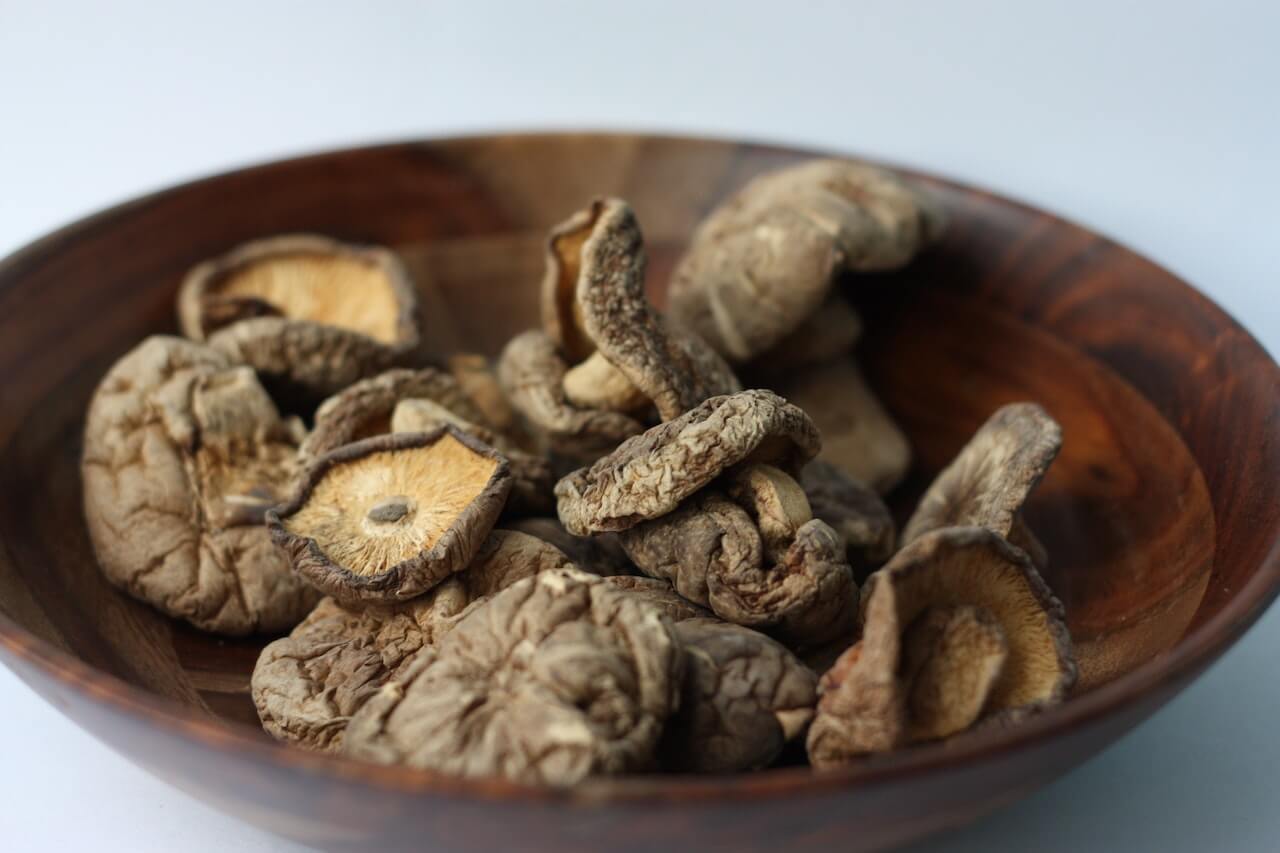
.jpg)

